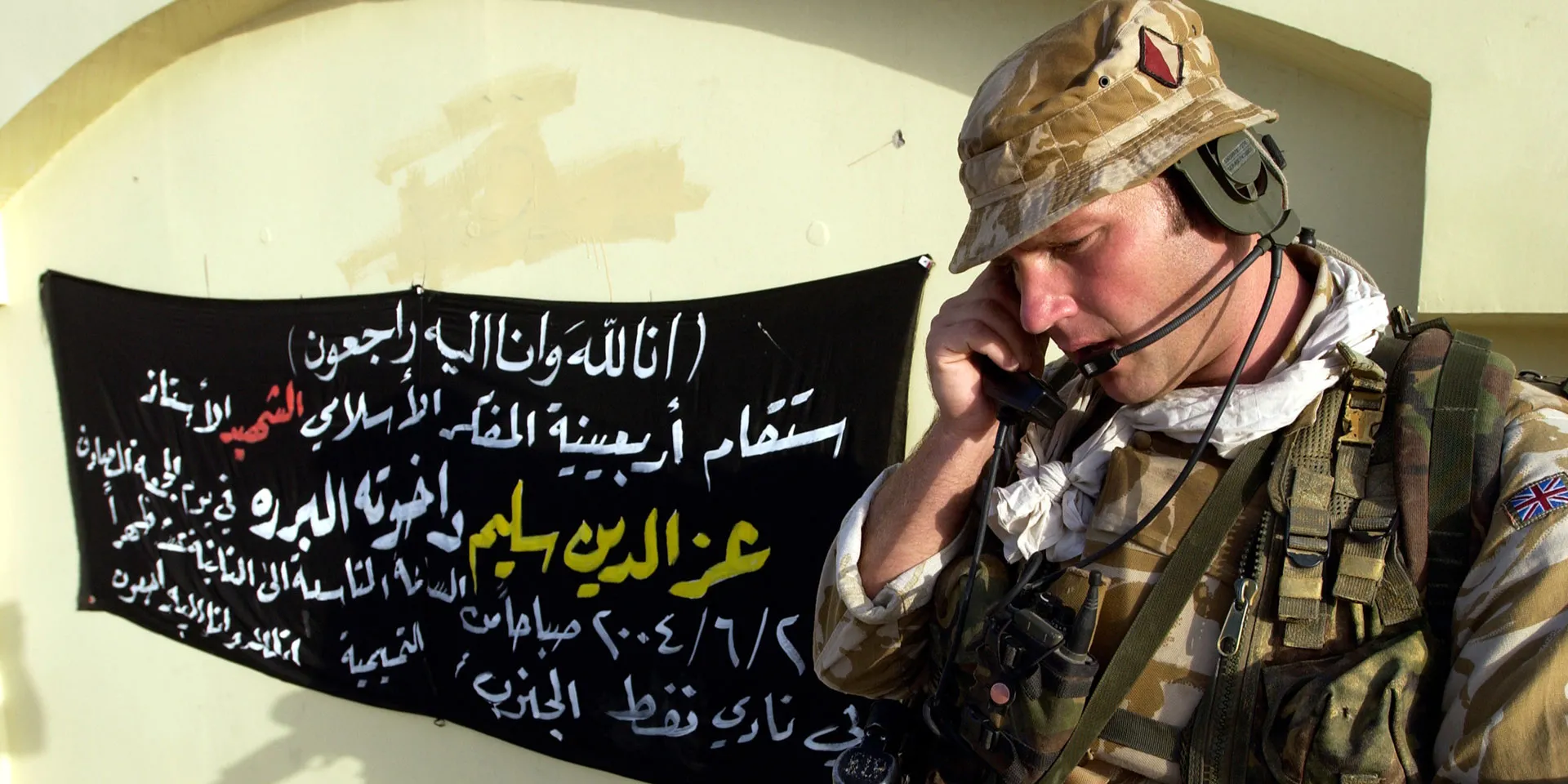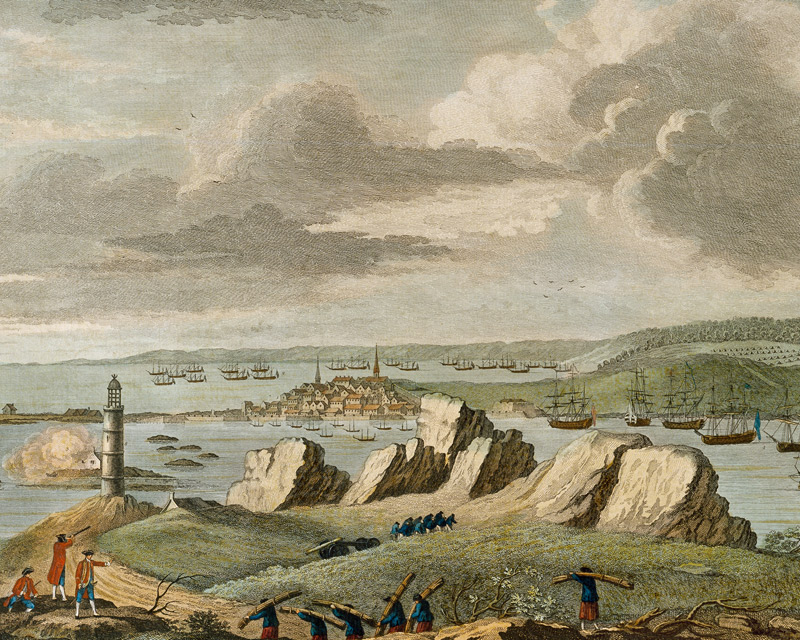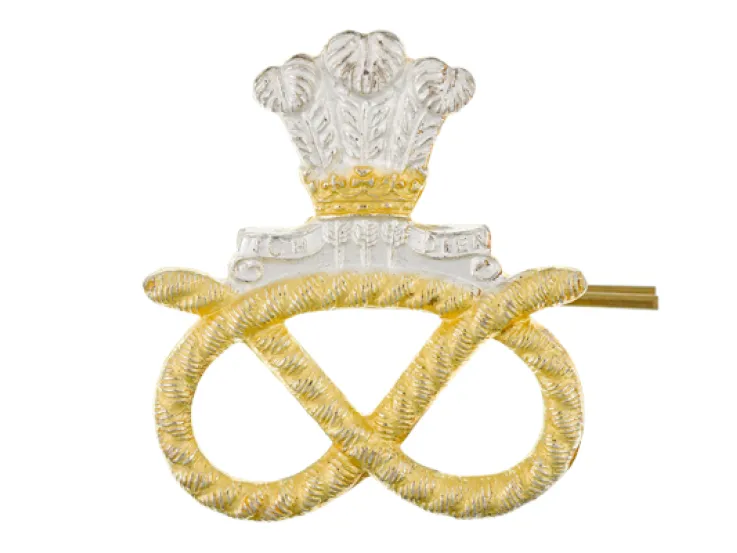Origins
In March 1689, the newly deposed James II landed in Ireland and began raising an army to take back the British throne from his son-in-law, William III. With a coastline on the Irish Sea, the county of Cheshire was particularly vulnerable. And so, in that same month, Henry Howard, 7th Duke of Norfolk, formed a regiment on the Roodee racecourse in Chester.
This unit was sent to Ireland later in 1689 and fought at both the Boyne (1690) and Aughrim (1691). It then served in Flanders at Landen (1693) and Namur (1695), before returning to Ireland as a garrison until 1702, with a brief redeployment to the Netherlands.
Garrisons
On the outbreak of the War of the Spanish Succession (1702-13), it was sent to Jamaica, where it remained for 12 years. Following a period of home service, it then spent 22 years on the island of Menorca from 1726. During its time there, it also sent detachments to the Battle of Dettingen (1743) during the War of the Austrian Succession (1740-48).
In 1749, the regiment moved back to Ireland. Two years later, it was named the 22nd Regiment of Foot.
North America
Under its new name, it helped take Louisbourg in Canada in 1758 during the Seven Years War (1756-63). Its grenadiers also joined General Wolfe's force at Quebec in 1759. Soon afterwards, the regiment helped capture Martinique and Havana in 1762.
It was in England and Ireland from 1765 to 1773. It then fought in the American War of Independence (1775-83), including the Battle of Rhode Island (1778), before having to surrender at Yorktown with General Cornwallis.
'Cheshire' was officially incorporated into its regimental title during its voyage home from North America in 1782.
French war
During the French Revolutionary Wars (1793-1802), it was back in the West Indies, taking part in the expeditions against Martinique, St Lucia and Guadeloupe in 1794.
From 1800 until the end of the Napoleonic Wars (1803-15), it served in South Africa and India, also fighting at Bhurtpore in 1805 during the Second Maratha War (1803-05). Its soldiers remained in India as garrison troops until 1819.
Victorian era
Following another spell of home service, it returned to India in 1841. During this time, it became the only English unit to participate in the Scinde campaign in 1843. It was back in England again in 1855.
In 1858, it raised a 2nd Battalion of regular troops, reviving an earlier 2nd Battalion that had been raised for less than a year in 1814. Both battalions undertook garrison duties across the British Empire over the next two decades.
As a two-battalion unit, it was not amalgamated with another regiment during the 1881 reforms. Both battalions served during the Third Burma War (1885-87). They then undertook further garrison duties until 1914, although 2nd Battalion also fought in the Boer War (1899-1902).
First World War
Both regular battalions deployed to the Western Front in 1914-15. 1st Battalion stayed there for the duration of the First World War (1914-18), but suffered 771 casualties at Audregnies during the Battle of Mons in August 1914. 2nd Battalion transferred from France to Salonika in late 1915.
The regiment also raised 36 Territorial, New Army and Garrison battalions, fighting in Gallipoli, Sinai, Mesopotamia and Palestine as well as on the Western Front.
The regiment’s regular battalions spent the inter-war years in Ireland, Malta, Sudan, India and Palestine.
Second World War
1st Battalion served in North Africa (1940-41), Malta (1941-44) and North West Europe (1945) during the Second World War (1939-45).
2nd Battalion was evacuated from Dunkirk (1940) before fighting in North Africa (1941-43), Sicily and Italy (1943-44). It then landed on D-Day and fought in the North West Europe campaign.
The regiment raised several other units during the war, including the 6th and 7th Battalions that fought in Italy (1943-45).
Post-war
After its 1st and 2nd Battalions were merged in 1948, the regiment's post-war deployments included garrison duties in Egypt and Cyprus, before fighting in the Malayan Emergency (1948-60) from 1958.
Service in West Germany, Cyprus, Hong Kong and Belize ensued over the next 30 years, along with eight tours of Northern Ireland (1969-2007).
In 1992-93, it took part in peace-keeping duties in Bosnia (1992-95). It returned to Germany, Cyprus, Northern Ireland and England over the next decade, before its final overseas independent posting to Iraq (2003-11) in 2004.
Legacy
In 2007, it merged with The Worcestershire and Sherwood Foresters and The Staffordshire Regiment to form The Mercian Regiment, of which it formed the 1st Battalion. Prior to that, it was the only remaining British line infantry regiment never to have been amalgamated.
Regimental museums
The National Army Museum works with a network of Regimental and Corps Museums across the UK to help preserve and share the history and traditions of the Army and its soldiers.
Discover more about The Cheshire Regiment by visiting Cheshire Military Museum in Chester.















